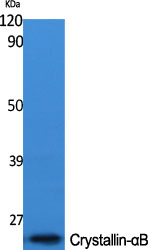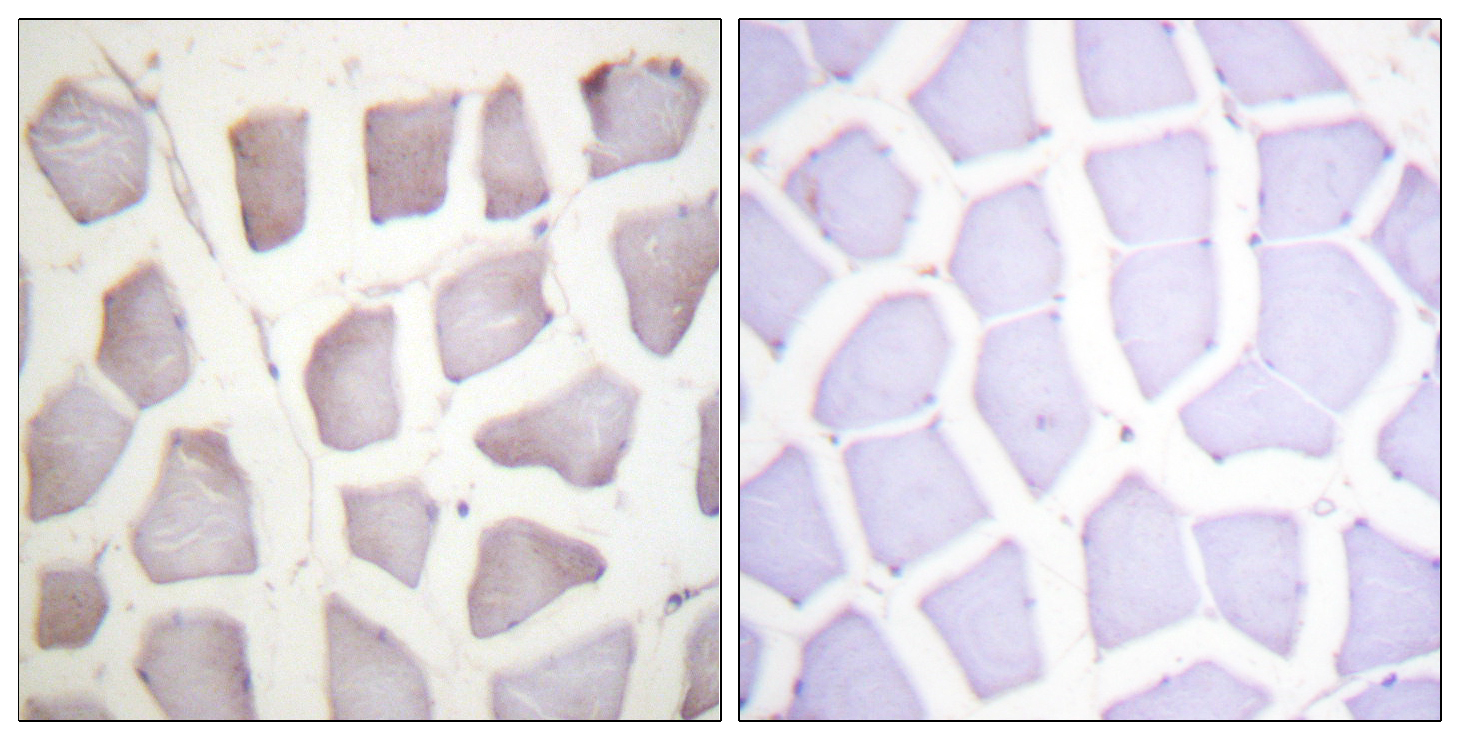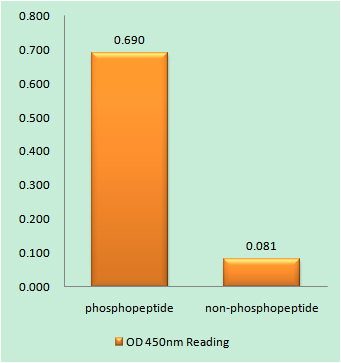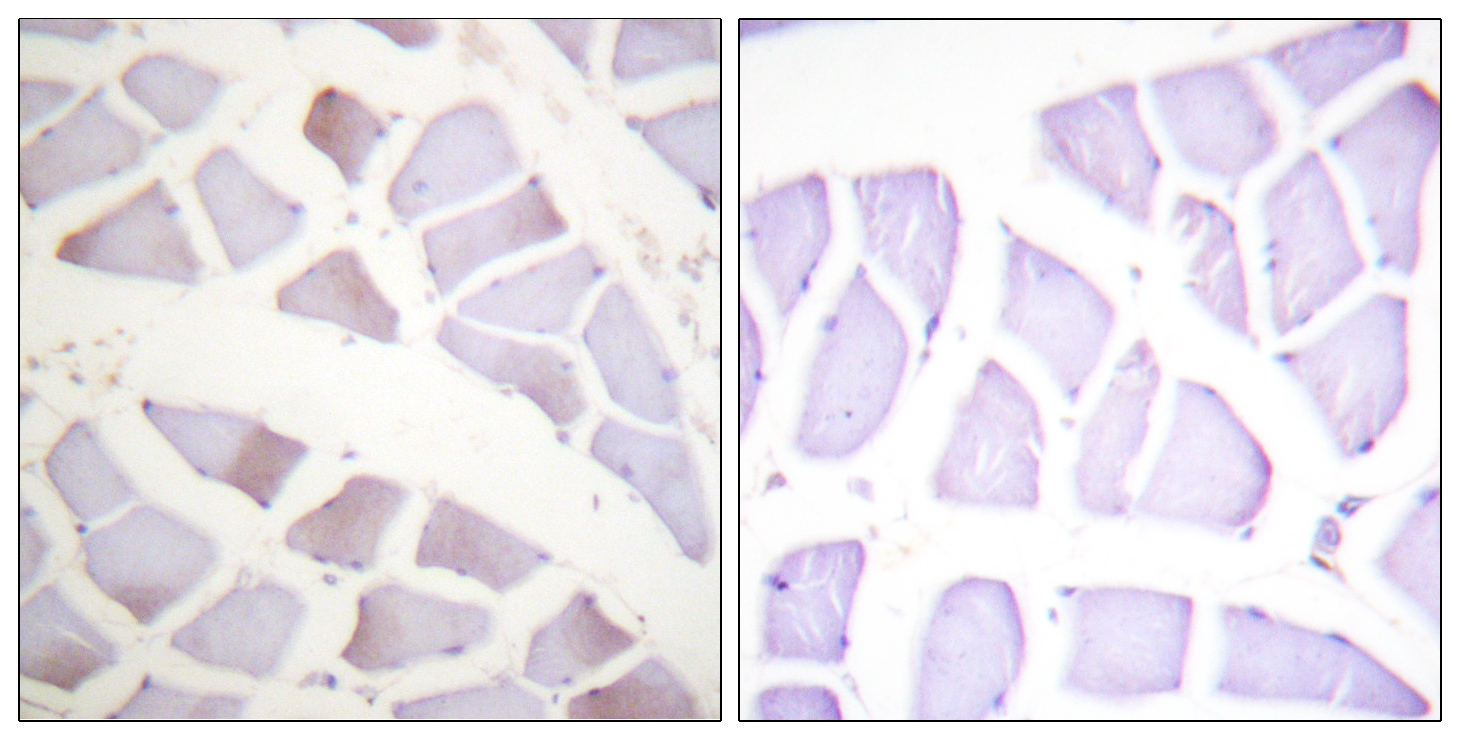
Catalog: KA1447C
Size
Price
Status
Qty.
96well
$470.00
In stock
0
Add to cart


Collected


Collect
Main Information
Reactivity
Human, Mouse, Rat
Applications
ELISA
Conjugate/Modification
Phospho
Detailed Information
Storage
2-8°C/6 months,Ship by ice bag
Modification
Phospho
Detection Method
Colorimetric
Related Products
Antigen&Target Information
Gene Name:
CRYAB
show all
Other Name:
Alpha-crystallin B chain ;
Alpha ;
B ;
-crystallin ;
Heat shock protein beta-5 ;
HspB5 ;
Renal carcinoma antigen NY-REN-27 ;
Rosenthal fiber component ;
Alpha ;
B ;
-crystallin ;
Heat shock protein beta-5 ;
HspB5 ;
Renal carcinoma antigen NY-REN-27 ;
Rosenthal fiber component ;
show all
Background:
disease:Crystallins do not turn over as the lens ages, providing ample opportunity for post-translational modifications or oxidations. These modifications may change crystallin solubility properties and favor senile cataract.,disease:Defects in CRYAB are the cause of alpha-B crystallinopathy [MIM:608810]. Alpha-B crystallinopathy is a an autosomal dominant form of desmin-related myopathy (DRM) that results in weakness of the proximal and distal limb muscle (including neck, velopharynx, and trunk muscles), signs of cardiomyopathy and cataract. Patients with progressive myopathy characterized by myofibrillar degeneration that commences at the Z-disk, have been described. Mutations truncate the essential C-terminal domain of the protein required for the chaperone function.,disease:Seen as Rosenthal fiber protein in the brain tissue of patients with Alexander disease.,function:May contribute to the transparency and refractive index of the lens.,mass spectrometry: PubMed:10930324,mass spectrometry: PubMed:8175657,mass spectrometry:With 1 phosphate group PubMed:10930324,mass spectrometry:With 1 phosphate group PubMed:8175657,mass spectrometry:With 2 phosphate groups PubMed:8175657,similarity:Belongs to the small heat shock protein (HSP20) family.,subunit:Aggregates with homologous proteins, including CRYAA and the small heat shock protein HSPB1, to form large heteromeric complexes. Interacts with HSPBAP1 and TTN/titin.,tissue specificity:Lens as well as other tissues.,
show all
Function:
MAPKKK cascade, microtubule cytoskeleton organization, response to reactive oxygen species, regulation of cell growth, eye development, muscle system process, monosaccharide metabolic process, glucose metabolic process,protein folding, protein complex assembly, oxygen and reactive oxygen species metabolic process, anti-apoptosis,muscle contraction, response to oxidative stress, cytoskeleton organization, microtubule-based process, intracellular signaling cascade, protein kinase cascade, sensory organ development, muscle organ development, aging, regulation of cell size, response to temperature stimulus, response to heat, response to abiotic stimulus, response to endogenous stimulus, response to hormone stimulus, response to organic substance, response to inorganic substance, regulation of cell death, hexose metabolic process, negative regulation of cell growth, stress-activated protein kinase signaling pathway, microtubule polymerization or depolymerization, response to estradiol stimulus,regulation of intracellular transport, negative regulation of intracellular transport, regulation of cellular component size, cellular response to stress, regulation of growth, response to hydrogen peroxide, regulation of apoptosis,camera-type eye development, negative regulation of apoptosis, regulation of programmed cell death, negative regulation of programmed cell death, response to estrogen stimulus, macromolecular complex subunit organization,negative regulation of cell size, negative regulation of growth, response to steroid hormone stimulus, negative regulation of transport, protein oligomerization, protein homooligomerization, stress-activated MAPK cascade,regulation of cellular localization, negative regulation of cell death, macromolecular complex assembly, protein complex biogenesis,
show all
Cellular Localization:
Cytoplasm . Nucleus . Secreted . Lysosome . Translocates to the nucleus during heat shock and resides in sub-nuclear structures known as SC35 speckles or nuclear splicing speckles (PubMed:19464326). Localizes at the Z-bands and the intercalated disk in cardiomyocytes (PubMed:28493373). Can be secreted; the secretion is dependent on protein unfolding and facilitated by the cargo receptor TMED10; it results in protein translocation from the cytoplasm into the ERGIC (endoplasmic reticulum-Golgi intermediate compartment) followed by vesicle entry and secretion (PubMed:32272059). .
show all
Tissue Expression:
Signaling Pathway
Reference Citation({{totalcount}})
Catalog: KA1447C
Size
Price
Status
Qty.
96well
$470.00
In stock
0
Add to cart


Collected


Collect
Recently Viewed Products
Clear allPRODUCTS
CUSTOMIZED
ABOUT US
Toggle night Mode
{{pinfoXq.title || ''}}
Catalog: {{pinfoXq.catalog || ''}}
Filter:
All
{{item.name}}
{{pinfo.title}}
-{{pinfo.catalog}}
Main Information
Target
{{pinfo.target}}
Reactivity
{{pinfo.react}}
Applications
{{pinfo.applicat}}
Conjugate/Modification
{{pinfo.coupling}}/{{pinfo.modific}}
MW (kDa)
{{pinfo.mwcalc}}
Host Species
{{pinfo.hostspec}}
Isotype
{{pinfo.isotype}}
Product {{index}}/{{pcount}}
Prev
Next
{{pvTitle}}
Scroll wheel zooms the picture
{{pvDescr}}




















